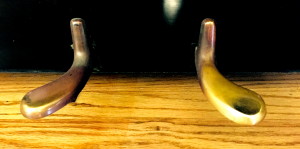
Venezuelan virtuoso pianist/composer Teresa Carreño (1853-1917) believed that pedaling is like mixing paints on a palette, creating a profusion of colors and shades. She called the use of pedaling, tone-painting. Her good friend/teacher Russian pianist/composer Anton Rubinstein (1829-1894) further called the damper pedal “the soul of the piano.” It is Anton Rubinstein’s legato pedal technique that I will be describing here today.
I waited until well into BOOK 4 to introduce the art of piano pedaling to beginners, because it is difficult to think about moving your foot while you are already lifting your fingers, reading the notes, counting the rhythm, and gliding your hands across the keyboard! However, many of you who played the piano in childhood regularly use the damper pedal, and might like a refresher course on pedaling BEFORE getting to BOOK 4. Therefore, this post is for the intermediate piano student starting BOOK 4, or for the returning student. Beginners can revisit this post when they are ready to begin pedaling!
Teresa Carreño warned that though we use the pedal to extend the sound of the notes after our fingers have lifted off the keys, it is not a substitute for smooth, legato playing:
The “legato” must be produced with the fingers, the hands, and the arms, and the [damper] pedal must be brought to act as a help, not as the chief medium.
The damper pedal is especially helpful in allowing the sound to linger while our hands are leaping to notes that are far apart. Besides a legato effect, the damper pedal also heightens the piano’s tone, making the music sound warmer, more vibrant and rich.
To introduce you to damper pedal technique I have made two videos. The first video is an introduction to damper pedal technique:
A general rule is to lift and press (“kick-back”) the damper pedal each time a chord (broken or block) changes, but if you are playing a lot of sixteenth notes, you might lift and press the pedal with each quarter note beat. Using the legato pedal technique I describe in the sheet music and video below, you fully depress the key (“hit-bottom”), then immediately raise and lower your pedal. The result is that you are lifting your pedal slightly after playing the note.
By waiting to lift and press the pedal until you have fully depressed the key, you prevent any silences from occurring between the chords.
The second video below accompanies pages 28-29 in Upper Hands Piano, BOOK 4 offering an exercise to learn this “legato” (or “overlapping”) pedal technique. Click on the sheet music to enlarge.
You can watch the following video as you follow along in the music:
(Please excuse my nerdy videos! I am trying to get more comfortable in front of the video camera, but I am not there yet!)
If this is your first time using the damper pedal, you will find it challenging! Think of the lift/press (“kick-back”) motion as one maneuver. Each time you lift, you immediately press once again. (You can practice this quick up-down, “kick-back” maneuver any time or any where you are sitting!) In Upper Hands Piano BOOK 4 you will find many exercises and pieces in which to practice this technique.
Though at first you will faithfully follow the pedal markings, after a while YOU will determine where pedaling will enhance your music. It becomes second nature and instinctual with time. But beware of over-pedaling. In The Art of Pedaling, Teresa Carreño advises:
The pianist cannot be careful enough in avoiding the blurring which can arise from an “abuse” of the [damper] pedal.
For now, experiment with a little pedaling each time you practice to get used to it. Try to lift and press (“kick-back”) once your key is fully depressed, each time your chord changes. Let me know how it goes by leaving a comment!
With love and music, Gaili


